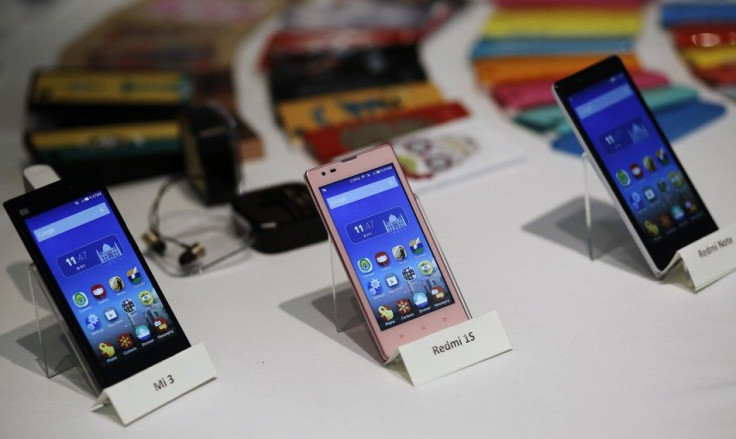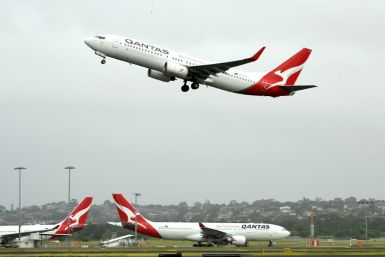Xiaomi Redmi 1S vs. Sharp Aquos Crystal – Specifications, Features And Price Showdown

The uniquely designed "Sharp Aquos Crystal" with bezel-free, edge-less display has recently been launched, while the widely-popular "Xiaomi Redmi 1S" was originally released in its home-country China in May. However, now, the device can be purchased in many global markets. Readers who are interested in the wallet-friendly Xiaomi Redmi 1S or the Sharp Aquos Crystal smartphone should check out this comparison.
Display, Exterior And Size
The Redmi 1S smartphone features a 4.7-inch IPS LCD display complemented by a screen resolution of 720 x 1,280 pixels. The Sharp Aquos Crystal, on the other hand, comes with a relatively bigger 5.0-inch TFT display but the screen resolution is same as the Xiaomi handset. The pixel densities of Xiaomi and Sharp devices stand at 312 ppi and 294 ppi, respectively.
When it comes to design, the Sharp Aquos Crystal boasts edge-less display. This means, the gap fencing the periphery of the screen from the back panel is virtually non-existent. This makes the display look as though it extends to the edges of the device. Coming to build, the handset features slim-bezel count affixed on a plastic body and provides solid construction. This smartphone has a brilliant screen-to-size ratio of 78.26 percent, while the vast majority of flagships provide only 70 percent, reports Phone Arena.
The Xiaomi smartphone, meanwhile, comes with a plastic rear combined with a marginally glossy outlook. However, the housed front and back panels have the tendency to amass fingerprints and smudges. Tech2 points out that, the plastic material used in the Redmi 1S handset is relatively better looking when pitted with many other budget-friendly smartphones in the market.
Speaking of size, the thickness and weight of Redmi 1S and Aquos Crystal are (0.39-inch and 158 g) and (0.39-inch and 141 g), respectively. Even though the thickness of the handsets is identical, the Sharp smartphone is lighter than the Xiaomi device.
Hardware, Software And Memory
Interestingly, both the smartphones are powered by the same quad-core (Qualcomm Snapdragon 400) Cortex-A7 processor. But then, the processors of Sharp and Xiaomi devices are clocked at 1.2 GHz and 1.6 GHz, respectively. While the Sharp Aquos Crystal is backed by a good 1.5 GB of RAM, the Xiaomi Redmi 1S settles for 1 GB. Furthermore, the Redmi 1S runs on Android v4.3 Jelly Bean OS with Xiaomi's MIUI v5 on top of it, whereas the Sharp Aquos Crystal runs on stock Android OS v4.4.2 KitKat.
As far as the memory goes, both the handsets are equipped with 8 GB of internal storage. In addition, both the smartphones support microSD card. However, the expansion limits of Xiaomi and Sharp smartphones stand at 32 GB and 128 GB, respectively.
Camera And Battery
Both the smartphones sport the same 8 MP primary camera with LED flash. In addition, the Sharp handset features a 1.2 MP shooter as the secondary unit, while the Redmi 1S houses a 1.6 MP shooter. Moving on to battery configuration, the Redmi 1S is backed by a Li-Ion 2000 mAh battery, whereas the Aquos Crystal comes with a relatively better Li-Ion 2040 mAh battery unit.
Misc
1. In order to get the edge-less display, Sharp has moved the front-facing camera, light/proximity sensor and notification light to the tail-end of the screen. Additionally, there is no earpiece speaker in this device. Therefore, the call quality is quite disappointing. The company has used direct wave receiver in place of the earpiece speaker. Meaning, the whole handset vibrates to produce sound by utilising the bone conduction technology.
2. The Xiaomi handset comes with alterable rear shell option, while the Sharp device doesn't. In addition, Xiaomi handset comes with dual-SIM support, whereas the Aquos Crystal doesn't.
3. Both the devices come equipped with Wi-Fi, Bluetooth and microUSB port. While the Aquos Crystal supports 4G LTE, the Xiaomi Redmi handset doesn't.
Price
The Sharp Aquos Crystal (8 GB, 4G LTE) can be purchased for US$149.99 via Boost Mobile that roughly translates to AU$171. The Xiaomi Redmi 1S handset (8 GB, Dual-SIM), on the other hand, is priced at INR 5,999 that roughly translates to as low as AU$112 and US$97.
Also Read
1. Samsung Galaxy S5 v. Samsung Galaxy Alpha - Find Out Which Is The Better Handset - [Read]
2. Oppo N3's New Teaser Confirms 16 MP Rotating Camera And Fingerprint Scanner, Release Date Set For Oct 29 - [Read]
3. Galaxy Note 4: Best Big-Screen Phone, Says Samsung; Analysts Believe Note 4 Unlikely To Beat iPhone 6 Plus [Watch Video] - [Read]






